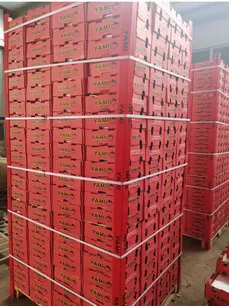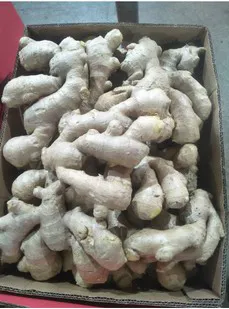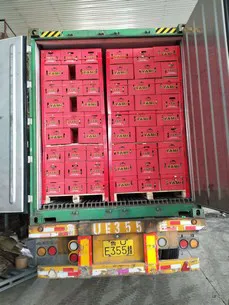“If the price of ginger in China continues to stay at a high level, it is very likely that products from other countries will use this opportunity to enter the European market, leading Chinese exporters to lose some of their overseas markets. For example, Peruvian ginger entered the European market in 2010 when Chinese ginger prices were high. ”Mr. Wang, Manager at Qingdao Serve Nature Future said.

“Ginger is also grown in Peru, Brazil, Vietnam, India, Thailand, and Laos, and the quality of ginger in Peru and Brazil is especially high, but their weakness is that their production is not large, therefore only commanding a small share in the international ginger industry,” stated the manager.
“Currently, ginger from China still has the largest share in the global market, so its price affects the global market price, and the influx of foreign capital keeps the price of Chinese ginger high. There is enough volume of ginger from China, but there’s less high-quality ginger compared with last year. Especially, there is expected to be less high-quality ginger after the rainy season. These are the reasons for the high ginger prices this year, and the high prices have also affected our export performance to some extent.”
“Europe is our main market. For example, we process the conventional ginger under the Yami brand for Aartsen in the Netherlands,” shared Manager Wang. “Currently, our export price is about 20 euros/carton (13 kg), while the price of ginger from Brazil is only 15 euros/carton (13 kg). Due to high prices, the export volume has dropped slightly compared with the same period of previous years. In previous years, our annual export volume was around 200 containers, while this year's export volume is expected to be below 100 containers. The ginger marketed in the Dutch market is mainly from China, Thailand, Brazil, and Peru, but the volumes from Brazil and Peru are small and cannot be supplied all year round. However, when facing high Chinese ginger prices, many of the Dutch traders tend to choose more ginger from South America. High prices will lead to the loss of overseas markets, which is not a good thing for China's ginger industry."
 “Everyone knows that Shandong is a big province for the cultivation of ginger in China. In fact, in addition to Shandong, Hebei, and Liaoning, as well as Fujian, Anhui, Guangxi, and Yunnan in the south of China are all main producing areas of ginger. Ginger grown from the north is large in size, bright in color and abundant in moisture, therefore suitable for juicing.
“Everyone knows that Shandong is a big province for the cultivation of ginger in China. In fact, in addition to Shandong, Hebei, and Liaoning, as well as Fujian, Anhui, Guangxi, and Yunnan in the south of China are all main producing areas of ginger. Ginger grown from the north is large in size, bright in color and abundant in moisture, therefore suitable for juicing.
On the other hand, ginger grown in the south has less moisture and more fiber and is therefore suitable for making dried products.”
According to Mr. Wang, ginger from Guangxi has only been gaining awareness in the market in the last two years. This type of ginger is not as large and smooth as the ginger grown in the north, and the color is not very good - some is a bit gray, and the yield is low. But the main advantage of ginger from Guangxi is that it’s generally planted on the hills, and therefore is more natural and has low pesticide residues. “Mr. Wang introduced.

“In recent years, the EU has imposed stricter standards on imported ginger and higher requirements for product quality. This is an advantage for the ginger from Guangxi, China.
Our products are tested by Eurofins’ Qingdao office, which uses the same standards as the ones used in Europe,” Manager Wang said. “Currently, more and more government departments and individuals are concerned with the problem of pesticide residues in food, but this is a long process that takes time to improve. We need the joint efforts of relevant departments and institutions at home and abroad."
Qingdao Serve Nature Future focuses on the growing, processing and export of ginger and garlic.
More information:
Wang Anyuan
Qingdao Serve Nature Future Co., Ltd.
Tel.: +86 13954740359
Email: andrew@nature-future.com
